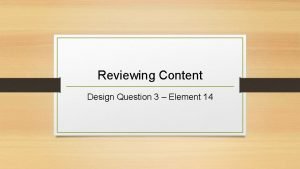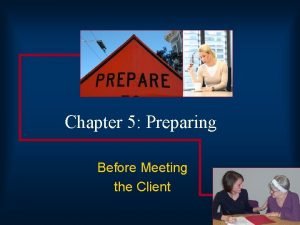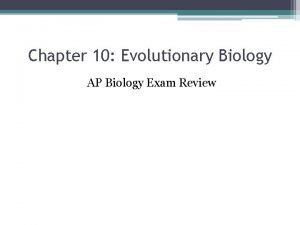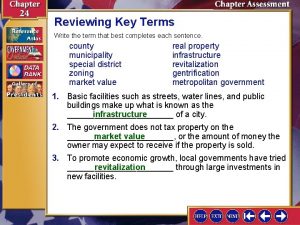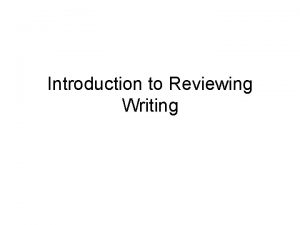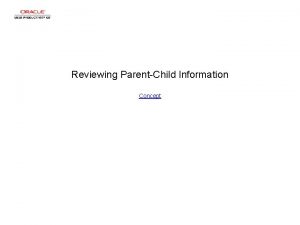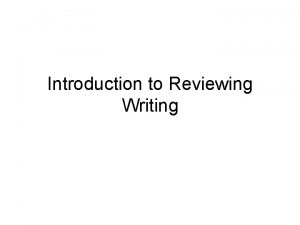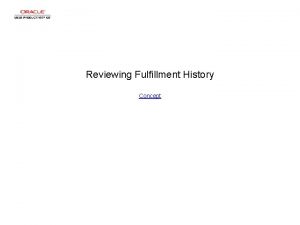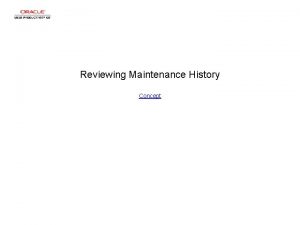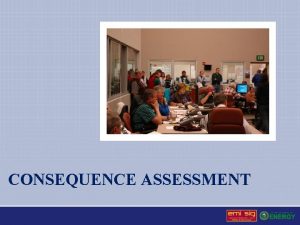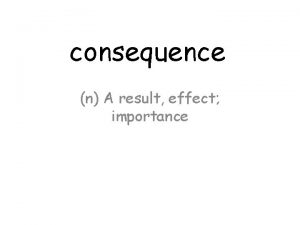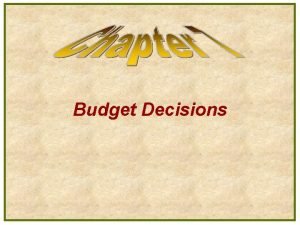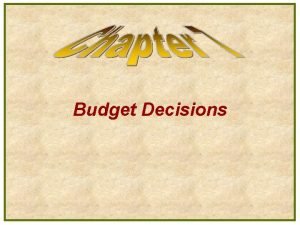REVIEWING HIGH RISK AND HIGH CONSEQUENCE DECISIONS Finding




![BUT IT’S A HIGH RISK DECISION, AND [In] … contemporary risk societies ‘chance’, ‘accident’ BUT IT’S A HIGH RISK DECISION, AND [In] … contemporary risk societies ‘chance’, ‘accident’](https://slidetodoc.com/presentation_image_h2/439b23bf8cc701fc6d03f3f6d380394e/image-5.jpg)







- Slides: 12

REVIEWING HIGH RISK AND HIGH CONSEQUENCE DECISIONS: Finding a Safer Way Dr Michael Eburn Name ANU College of Law The Australian National University CANBERRA © BUSHFIRE AND NATURAL HAZARDS CRC 2015

HIGH RISK/HIGH CONSEQUENCE DECISIONS • In wildfire, are made with little time and incomplete information. • After the event, there is demand for review • • To identify lessons? To make sure ‘it doesn’t happen again’? © BUSHFIRE AND NATURAL HAZARDS CRC 2016 2

WHAT IS THE PURPOSE OF THE INQUIRY? “The motivations for calling such investigations are many, but the strongest one ought to be to determine what we can learn from the examination and what we need to do to prevent or mitigate another like event. ” © BUSHFIRE AND NATURAL HAZARDS CRC 2016 3

OTHER MOTIVATIONS • • To show concern about an issue; Give an illusion of action; Show responsiveness to a problem; Co‐opt critics; Reduce opposition; Delay decision‐making; Reassert control of the policy agenda. Scott Prasser, ‘Royal Commissions in Australia: When Should Governments Appoint Them? ’ (2006) 65(3) Australian Journal of Public Administration 28‐ 47 , 34. © BUSHFIRE AND NATURAL HAZARDS CRC 2016 4
![BUT ITS A HIGH RISK DECISION AND In contemporary risk societies chance accident BUT IT’S A HIGH RISK DECISION, AND [In] … contemporary risk societies ‘chance’, ‘accident’](https://slidetodoc.com/presentation_image_h2/439b23bf8cc701fc6d03f3f6d380394e/image-5.jpg)
BUT IT’S A HIGH RISK DECISION, AND [In] … contemporary risk societies ‘chance’, ‘accident’ or ‘tragedy’ are no longer accepted as explanations for social ills and physical threats, someone must be blamed for their occurrence…’. Annika Brändström and Sanneke Kuipers, ‘From ‘Normal Incidents’ to Political Crises: Understanding the Selective Politicization of Policy Failures’ (2003) Government and Opposition 279‐ 305, 292, 299. © BUSHFIRE AND NATURAL HAZARDS CRC 2016 5

A DESIRE TO APPORTION BLAME? • Inquiries often fall back on legal techniques. • Lawyers behave like lawyers and seek to protect their client’s interest. • The stated aim may be to avoid blame, but that is hard to avoid. © BUSHFIRE AND NATURAL HAZARDS CRC 2016 6

BLAME SEEKING INQUIRIES CAUSE HARM ‘many emergency responders experience the review process as more taxing than the critical event itself’. • • • Cheryl Regehr, John Hill, Gerald Goldberg and Judy Hughes, ‘Postmortem Inquiries and Trauma Responses in Paramedics and Firefighters’ (2003) 18 Journal of Interpersonal Violence 607‐ 622, 618; Michael Eburn and Stephen Dovers, 'Australian Wildfire Litigation’ (2012) 21(5) International Journal of Wildland Fire 488‐ 497; Michael Eburn and Bronwyn Jackman, ‘Mainstreaming Fire and Emergency Management into Law’ (2011) 28(2) Environmental and Planning Law Journal 59‐ 76. © BUSHFIRE AND NATURAL HAZARDS CRC 2016 7

AND THEY MAY NOT HELP WITH LEARNING • ‘The apportionment of blame … is a key impediment to organisational learning’. • Recommendations: • Are counter-factual; • May not be directed to relevant players; • Focus on a particular event and the terms of reference; • Do not let people ‘tell their story’; • Are delivered from ‘the bench’ from ‘the evidence’. © BUSHFIRE AND NATURAL HAZARDS CRC 2016 8

AN ALTERNATIVE - RESTORATIVE PRACTICES … a face‐to‐face encounter between those affected … facilitated by a trained mediator. . . The mediator’s role [unlike a Royal Commissioner or coroner] is not to impose his or her interpretation or solution … but to encourage them to tell their stories, express their feelings, ask questions of each other, talk about the impact and implications of the event, and eventually come to an agreement about what the community needs to do to facilitate recovery and manage future hazard events. Gerry Johnstone, Restorative Justice: Ideas, Values, Debates (Willan Publishing, 2003), 3. © BUSHFIRE AND NATURAL HAZARDS CRC 2016

RESTORATIVE PRACTICE CAN: • Recognize that one impact of a disaster is to disrupt communities and relationships and create conflict; • Emotions are high; • People want to be heard; • Allows for shared responsibility for the planning, response and outcome. © BUSHFIRE AND NATURAL HAZARDS CRC 2016 10

A SAFER WAY? • Would an inquiry based on restorative practices be • Safer for responders? • Safer for communities? • Eburn, M. & Dovers, S. , Discussion paper: Learning for emergency services, looking for a new approach. (Bushfire and Natural Hazards CRC, 2016). © BUSHFIRE AND NATURAL HAZARDS CRC 2016

COMMENTS? QUESTIONS? Thank you for your attention. Dr Michael Eburn Associate Professor, ANU College of Law, Australian National University & Visiting Scholar (January to July 2017) Disaster and Development Network, Northumbria University E: michael. eburn@anu. edu. au M (Australia): + 61 409 727 054 M (UK): +44 737 621 6647 © BUSHFIRE AND NATURAL HAZARDS CRC 2016 12
 Poster making meaning
Poster making meaning Screening decisions and preference decisions
Screening decisions and preference decisions Market risk assessment
Market risk assessment Reviewing concepts and vocabulary chapter 1
Reviewing concepts and vocabulary chapter 1 Five main stages of writing business messages
Five main stages of writing business messages The process of classifying and reviewing past due accounts
The process of classifying and reviewing past due accounts Reviewing key concepts: flatworms, annelids, and roundworms
Reviewing key concepts: flatworms, annelids, and roundworms![] ]](data:image/svg+xml,%3Csvg%20xmlns=%22http://www.w3.org/2000/svg%22%20viewBox=%220%200%20200%20200%22%3E%3C/svg%3E) ]
] Chapter 5 section 4
Chapter 5 section 4 Reviewing content strategies
Reviewing content strategies Preparatory consulting social work
Preparatory consulting social work Reviewing key concepts reproductive barriers
Reviewing key concepts reproductive barriers Reviewing key terms
Reviewing key terms




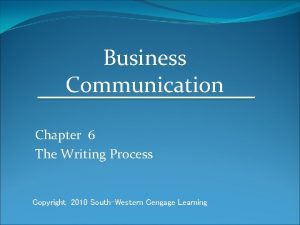
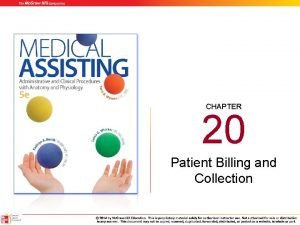
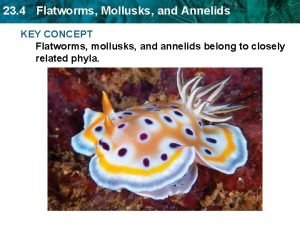
![] ]](https://slidetodoc.com/wp-content/uploads/2020/11/2404819_9eb8166b01395994bc3f851e1b2a9913-300x225.jpg)

